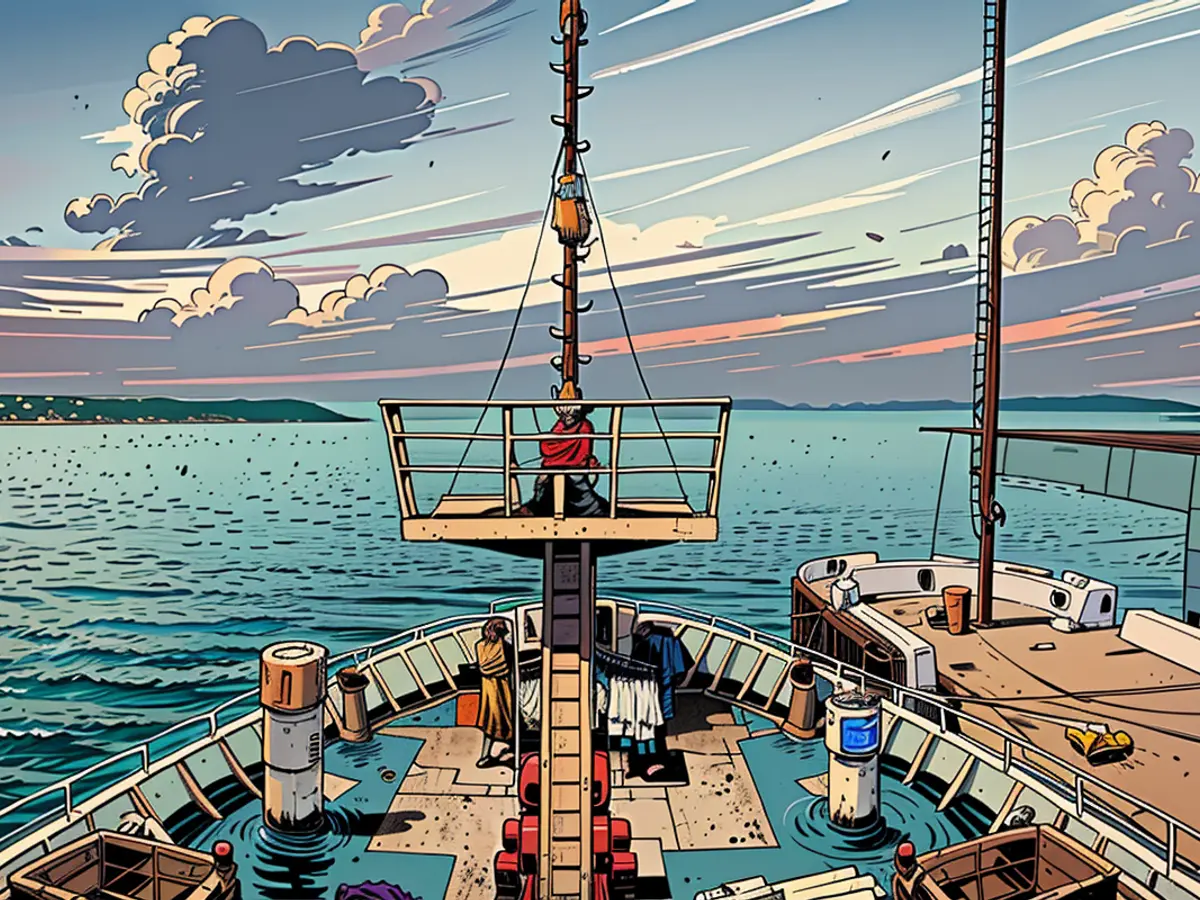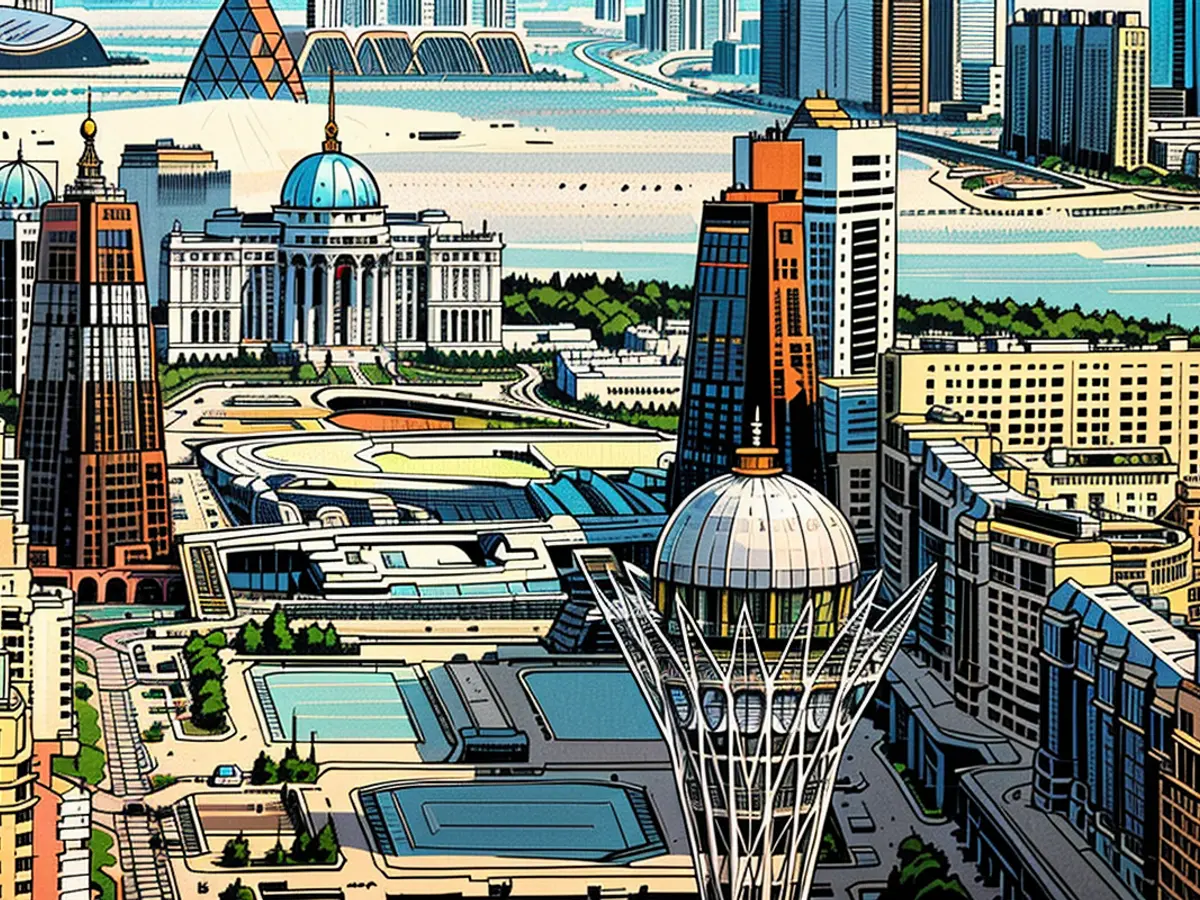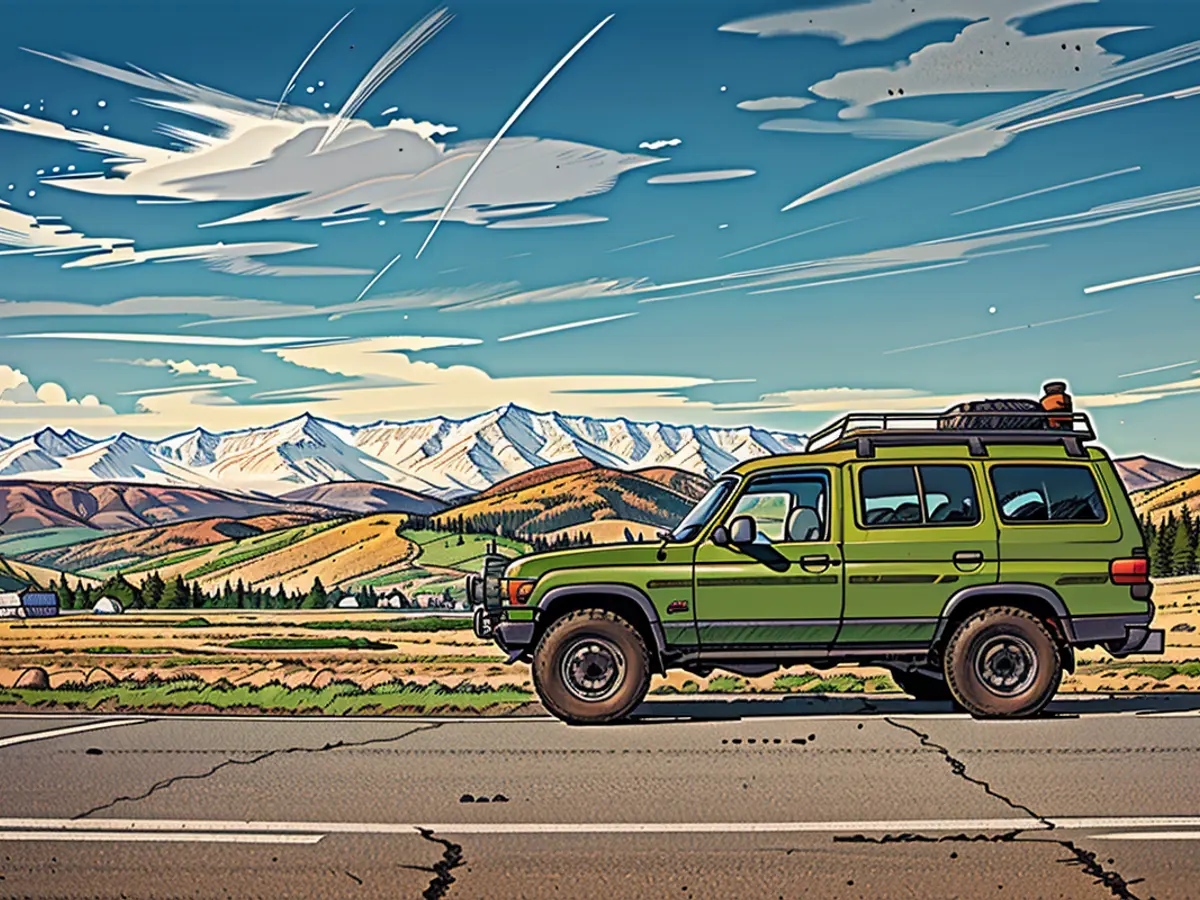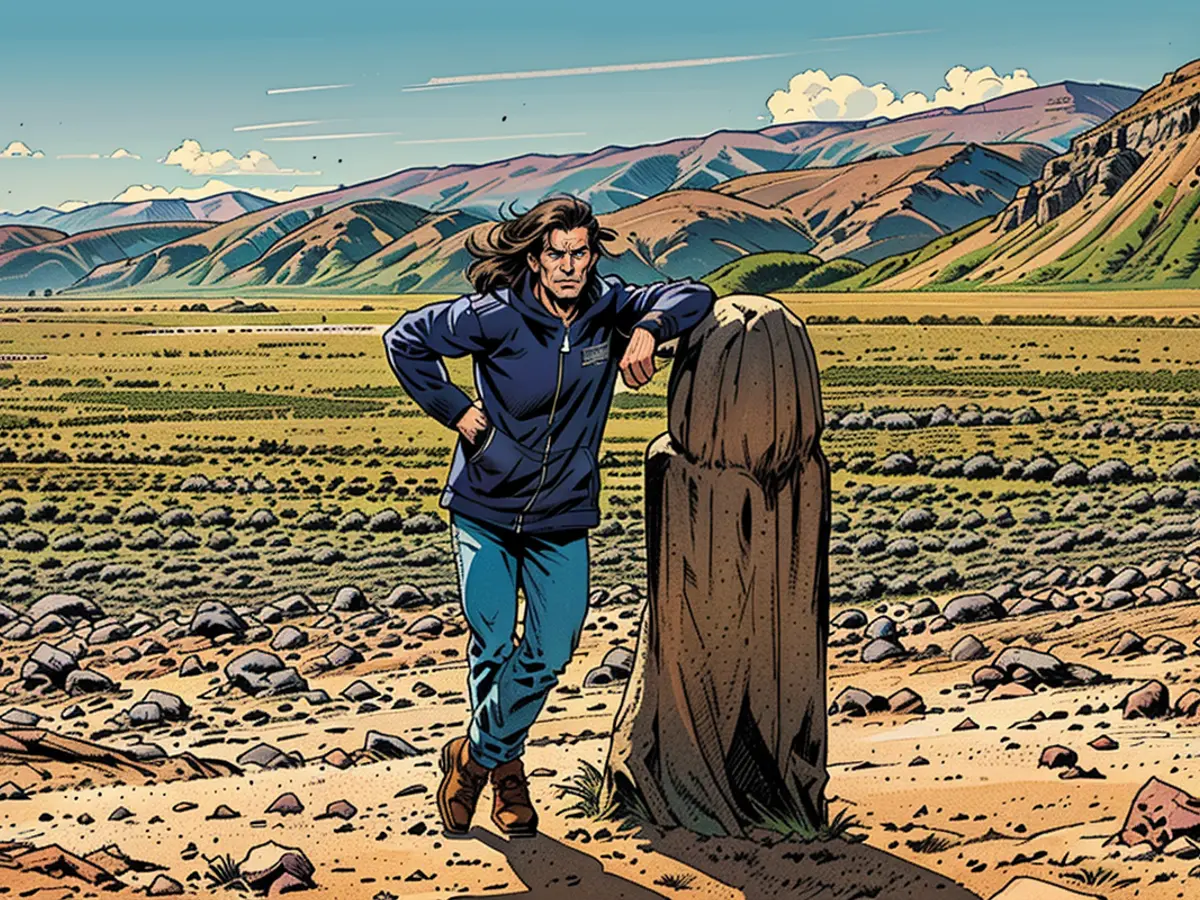This US woman drove solo from Georgia to Mongolia via Russia. It wasn’t the fun overlanding expedition she expected
Countries were just beginning to recover from the global pandemic and, only weeks after officially putting my plan into action – starting with the purchase of a 1978 Toyota Land Cruiser – the war in Ukraine had just started.
“No problem,” I thought. I wasn’t planning to drive through Ukraine.
However, I would have to drive through Russia. And I’d be doing it solo, an American female, in a vintage Land Cruiser that was anything but inconspicuous.
It soon became clear this would not be the fun overlanding expedition I initially envisioned.
With the war quickly escalating, I decided to delay my plans until the situation calmed down. It wasn’t for another year, in April 2023, that I finally felt comfortable enough to put my plans back in motion.
Step one: Get a Russian tourist visa
There was still one major hurdle to overcome before I could hit the road: I had to apply for a Russian visa – notoriously difficult to get as an American citizen, war or not. (The US State Department has issued a Level 4 “do not travel” advisory for Russia.)
Applying was straightforward enough. I found a Russian travel agency to provide me with an invitation letter and itinerary, purchased Russian health and medical insurance and located a visa center where I could apply in person in Tbilisi.
Everything submitted and out of my hands, I was doubtful that my three-year tourist visa would be approved – especially after having had several conversations with other travelers who had all recently been denied them.
Things weren’t looking particularly positive, and the concern from friends and acquaintances was increasing with each step I took with my planning.
Much to my relief, and surprise, the visa was approved. Whether it was because I applied in Tbilisi, or some other unknown reason, I still can’t say with any sort of certainty. But at that moment, my trip was officially set in motion and there was no going back.
Planning a 7,000-kilometer road trip
Russian visa in hand, it was time to start route planning, make my final vehicle preparations, and pack.
This was no ordinary road trip. I was moving from Tbllisi to Ulaanbaatar, where I would be based as a freelance travel writer, so my life would need to fit in one vehicle.
Sitting in front of my computer and looking at Google Maps, I realized the journey would be around 7,000 kilometers in total – 90 hours if I were to drive straight through without any stops or delays.
Immediately, I ran into two problems. First, the land border between Georgia and Azerbaijan closed during the pandemic and is still yet to open. That left me with only one driving option.
I would have to take the route north of Tbilisi, crossing into Russia from the Georgian town of Kazbegi, a route that would pass through a corridor of Russia with the sometimes restive regions ofChechnya and Dagestan on one side and Ukraine on the other. The Ukrainian cities of Mariupol and Donetsk, and a still-raging war, would only be 600 kilometers (360 miles) away.
Meanwhile, sanctions on Russia were bringing a lot of attention to this exact route. Russian citizens were allegedly entering Georgia, getting what they couldn’t get in their home country, and driving back. A lot of those purchases were vehicles, bringing increased scrutiny to who was driving what, and where.
With a car my size, bearing Georgian plates, driven by an American who doesn’t speak any Russian, I was increasingly nervous.
And so, with a week left before my planned departure from Tbilisi, I made the expensive decision to change my plans. Instead of entering Russia from Georgia, I would ship my car.
Finally, I had a route and a plan I was comfortable with. I packed my Land Cruiser onto a truck in Tbilisi and booked a flight to Baku, Azerbaijan’s capital and largest city.
Nine days later, in April, my shipping agent picked me up from my hotel in Baku to help expedite the customs process. Then it was an hour’s drive to the port in Alat where, after sleeping in the car in a loading lot, I boarded a ferry in the very early hours of the morning to cross the Caspian Sea.
The crossing only takes about 24 hours, but port delays meant time onboard was closer to 48 hours. Luckily, I had a private cabin with a bathroom, as well as friendly travel companions, including a couple overlanding from Europe to Japan, who were also shipping their vehicle.
The ship’s chef noticed us unusual passengersand made a special effort to give us dishes he was proud for us to try. Meals were included on the ship, and while the food was modest, and not all aspects of the boat were warm and comforting, his kindness made the journey memorable. (Click through the above Instagram post for a look at the food and accommodations on the ferry.)

We unloaded at the Kazakhstan port town of Kuryk and I climbed into my Land Cruiser.
I would now have to drive the length of Kazakhstan, famed for its rugged, mountainous scenery. This would limit my time in Russia to just 1,000 or so kilometers (about 600 miles) through the Altai region. From there, I could enter western Mongolia at the Tsagaannuur border in Bayan-Ölgii province and make the three-day drive to Ulaanbaatar.
(Throughout the road trip, I relied heavily on iOverlander and Caravanistan as up-to-date sources for border crossing advice, route planning tips and finding camp and fuel spots along the way.)
Anxious days
The journey brought many challenges.
In Kazakhstan, I scrambled for a hotel in Astana as a world chess championship had the entire city booked out. A burned-out rear brake light fix put me behind schedule and unable to escape the city before nightfall (I had a no driving in the dark rule), and with temperatures quickly dropping to -14 C (7 F), I needed a place to stay.
I was tired and anxious to get a hotel room. When I finally did find one, I failed to remember that diesel freezes until I woke up panicked halfway through the night. I let out a sigh of relief in the morning when the car started, but it only made it a mile before shutting down entirely as I reached a gas station. My fuel had indeed frozen the night before.

After manually pumping new diesel into the engine, I was able to get back on the road quickly. Crisis averted, I set my coordinates to Semey, where I would spend two nights and take a full day of rest before “the big” border crossing.
At this point, driver fatigue was setting in. Driving a 2.5-ton, fully loaded stick-shift vehicle for 12 hours a day is inevitably exhausting, no matter how exhilarating the journey is.
When Iarrived in Semey that night, far behind schedule after the morning’s mishaps, I assumed it was like any other city in this part of the world.
Little did I know, during Soviet times, Semipalatinsk, or Semey as it’s called today, was a “closed city.” Special clearance was required to live there, it didn’t appear on maps, and what was happening inside was a mystery to most.
After the fall of the Soviet Union, the reason for this was revealed – it was the closest city to the primary Soviet nuclear test site. Between 1949 and 1989 officials reportedly carried out 456 nuclear tests there, including 340 underground and 116 atmospheric explosions.
The effects on the local population are hard to miss. Even today – there is nothing inviting or even comfortable about the city.
After a brief rest, the day I had been most anxious to face my entire trip was finally here: crossing the border into Russia.
With a friend on the phone giving me the pep talk I needed, I left Kazakhstan without any problems.
The moment I handed my passport over to the immigration agent at the Russian border, the questions began.
I see why they were suspicious. An American girl, traveling alone, saying she’s moving to Mongolia, driving a car with Georgian plates. This, only weeks after just-released American journalist Evan Gershkovich was arrested and charged with espionage.

They didn’t appear to know what to do with me. With each of us speaking our own languages, I eventually was told to go sit down and wait. It would be another 45 minutes before an agent came to get me, walking me to another building, where I then had to wait again. A tactic to make me even more unnerved, I suspected.
Eventually, an English-speaking agent pulled me into a back room.
I think anyone in this situation would be nervous, and I was no exception. Remaining as calm as possible, the agent and I spoke for well over an hour. We talked about everything; where I lived in Georgia, why I was going to Mongolia, my relationship status (it was a baffling thing to the agents for a woman to be 37 and not married), where I went to college, who my family members were, what I did for work – all while he typed up my answers.
The agent, dressed in plain clothes, was stern but patient throughout the whole process. I learned he was also a photography enthusiast (once it became clear that he had thoroughly examined my Instagram, that is) and we started talking about the incredible scenery in his home country, which thankfully lightened the mood.
In the end, my passport was stamped, my car was once again thoroughly searched, and I was on my way through Siberia. The entire process took around six hours. I was already dreading going through the same thing all over again in two days.
Turns out I was right to be anxious about my exit. Following a long drive along Chuyskiy Trakt – one of the most beautiful roads I’ve ever traveled on – I realized I’d misplaced a necessary paper for the car, causing all sorts of confusion and unnecessary attention as I attempted to exit the country.
I was again pulled into a back room for an interrogation – this one not nearly as pleasant, the formally dressed agent analyzing my answers in much more detail.
Again, there were many questions about my relationship status and how it’s “weird” for someone “my age” to not be married with kids, along with remarks about how unsafe it was to travel alone (but not in Russia, of course), and how he couldn’t understand why anyone wanted to live in Mongolia.
Flipping through the pages of my passport again and again, eventually he ran out of questions and I was free to go. He even walked me to my car – I think it was more out of interest to see the Land Cruiser than anything else. I wouldn’t go so far as to say he was impressed when he finally saw it, but he was certainly curious.
With Russia in my rearview mirror, it was time to go home. I had made it to Mongolia.
Mongolia or bust

Finally crossing into Mongolia at Tsagaannuur in Bayan-Ölgii, Mongolia’s westernmost province, the relief and joy of having just made it across three countries – Azerbaijan, Kazakhstan and Russia – was overwhelming.
I did run into a few more issues, including a two-day snow delay in Ölgii, as well as a hard lesson on the effects of filling the car with dirty diesel in Kazakhstan. (I packed spare fuel filters for just this reason, thankfully.)
But it was experiences like this on the road that proved I was more capable than I thought.
Am I an expert mechanic, no. Did I have extensive overlanding experience? Heck no.
But did my intensive trip-prep, “everything is figureoutable” mentality and kind and respectful interactions with strangers get me through each day of the trip? Yes.
Eventually, exactly three weeks after leaving Georgia, I limped into Ulaanbaatar, battered but not broken, and was able to get the car into my local Toyota Top Motors shop for a much-needed service after running the Land Cruiser so hard.
I would soon need to get back on the road, after all. I had a summer of overlanding and adventuring across Mongolia, and a new life in Ulaanbaatar, to get underway.
You can follow Breanna’s Mongolia adventures on Instagram at @breannajwilson.
Upon arriving in Ulaanbaatar, Breanna needed to get her Land Cruiser serviced at Toyota Top Motors, as she had plans for a summer of overlanding and adventures across Mongolia.
Despite the challenges and anxieties faced during her journey, including a six-hour interrogation at the Russian border and a lengthy delay due to snow, Breanna's intensive trip-prep, resourceful attitude, and kind interactions with strangers had helped her complete the trip.
Read also:
- Fear of escalation in the Middle East: US Secretary of State Blinken travels to the region again
- Government circles: US Secretary of State Blinken to travel to Middle East again
- Bridging days 2024: How you can double your vacation this year
- Germany has wanderlust: how tour operators and airlines are looking ahead to the next travel year








